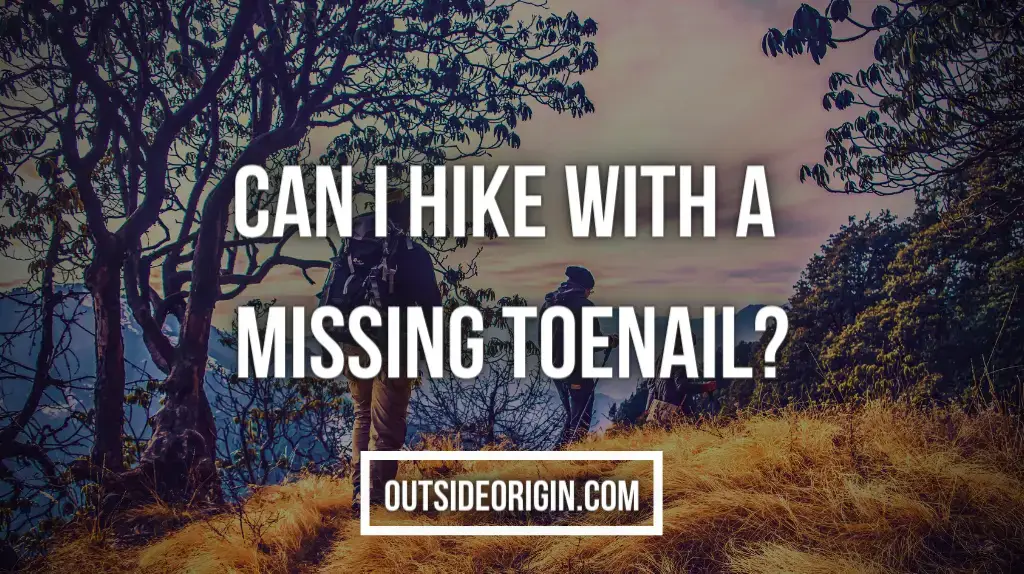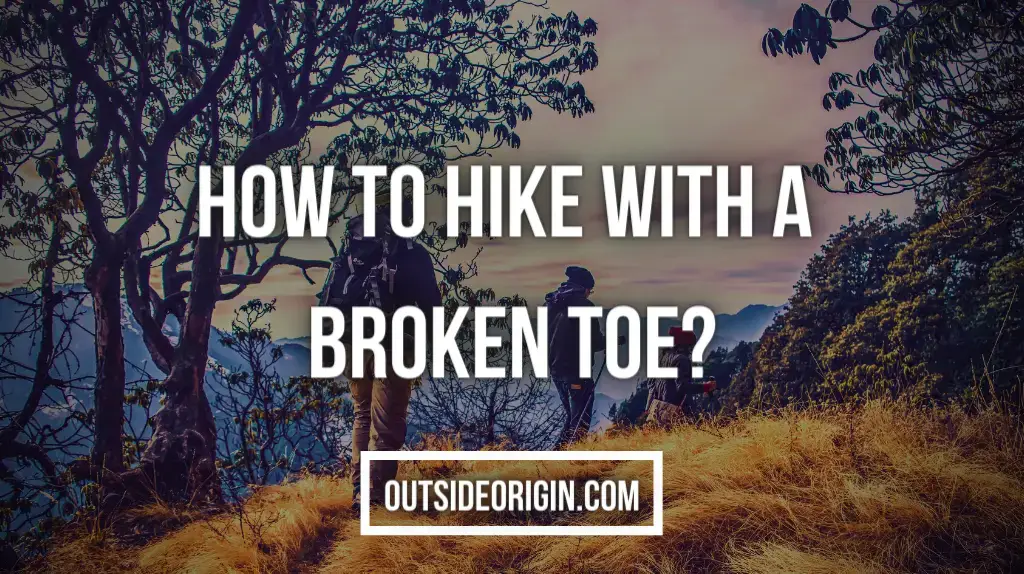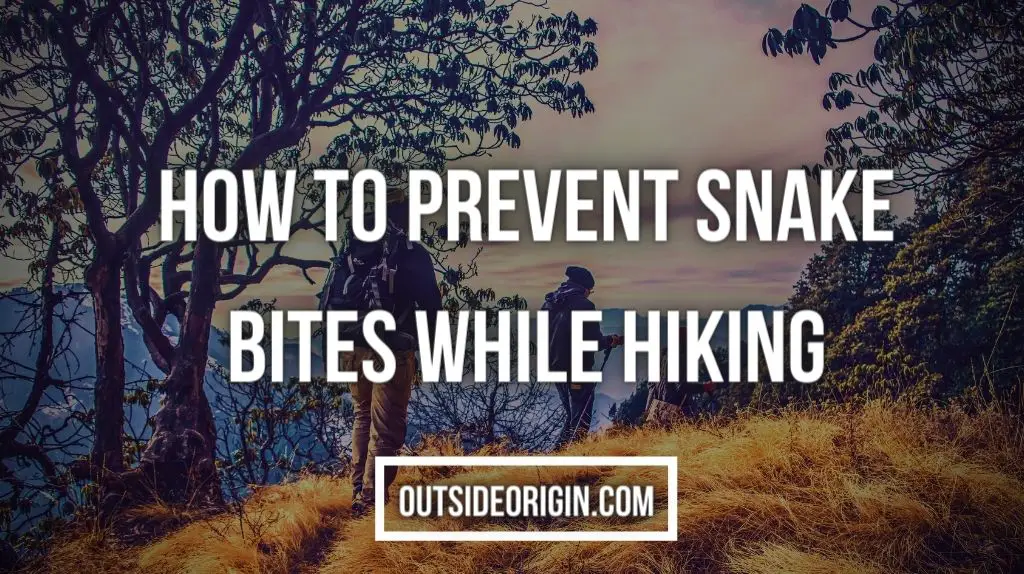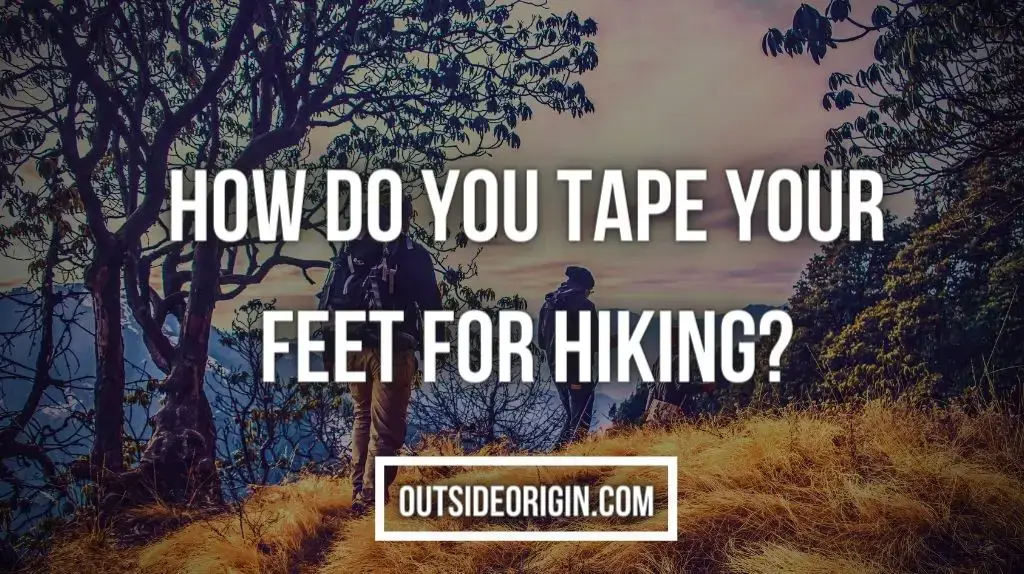You might have lost your toenail because of hiking and are probably wondering whether you can hike or not with a missing toenail.
To answer it shortly, you can hike with a missing toenail as long as you tape it properly however, it is recommended to let the toenail regrow a little bit within a few days and then after you can go hiking again.
What is toe bang hiking?
When hiking, toe banging occurs when your foot slides down to the front of your footwear and bangs on it. When hiking, this recurrent stress is a major source of toe discomfort and can even result in toenail loss.
Hiking without toenail
You should be able to return to normal activities very quickly if you can handle the tape and pain. It’s not as if you’ve fractured a bone. You’re set as soon as the skin grows on the nail bed.
Losing a toenail
While lesser occurrences of a black toenail will grow out on their own, if the toenail is elevated, you will most likely lose it. It may take a few weeks or months, but the toenail will finally push out the damaged, blackened toenail as it grows.
The black toenail is lifted off the toenail bed, revealing the healthy toenail below. Your black toenail will loosen from the sides over time, allowing you to cut it away.
If you care about how your toes look, you can paint the black toenail, the new thin toenail, or the bare flesh. If you use a deeper shade of polish, most people will not notice the difference.
Your toenail will be completely replaced in approximately three months, and the new toenail will be wavy in some parts and thicker in others. Your toenail should go back to normal in four to five months.
How to prevent toe bang hiking?
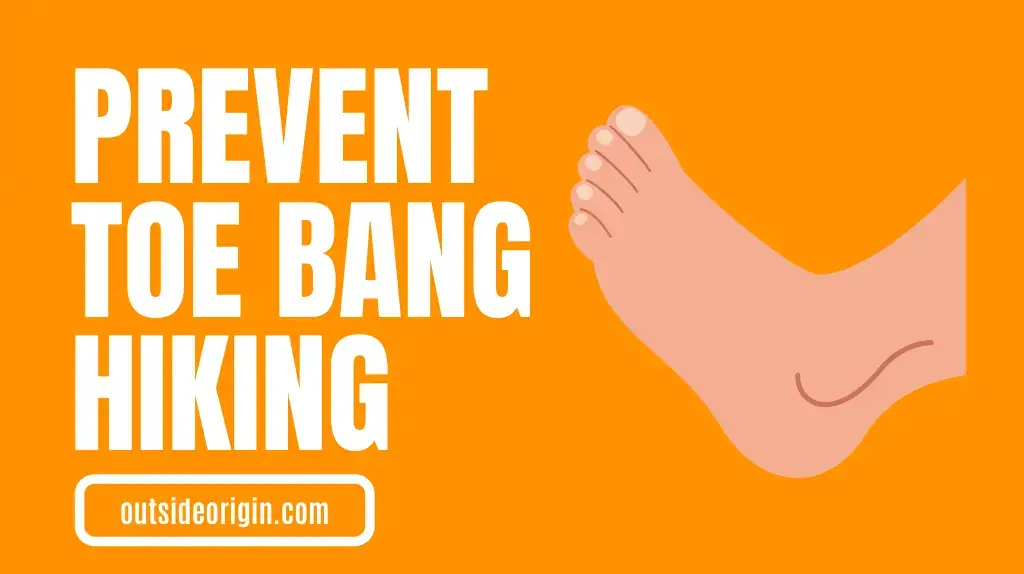
During there are various factors that contribute to toe banging while hiking, the most common cause is ill-fitting hiking footwear. Trekking boots that are excessively loose or too tight on your toes may create persistent damage, especially while downhill hiking. One of the most common reasons for toenail loss on the trial is trauma. Ensure that your hiking footwear is properly fitted to avoid this.
If you have correctly fitted hiking boots but still suffer toe discomfort or blackened toenails, there are a few more steps you may take to avoid toe-banging.
You could be thinking to yourself, “This is ludicrous.” you can tie your own shoes. But this suggestion can save your toes, especially on downhill hikes. Simply place your heel on the ground at 45 degrees with your foot flexed 90 degrees and push your heel into the back of your boot when tying your shoes. Tie your shoes in this position, with your heel resting comfortably along the heel of your hiking boot. This method of tying your shoes will keep your feet from moving forward and colliding with the end of your boot.
On the trail, no long toenails are permitted! Long toenails increase your risk of toe bang hiking injuries, and even if you don’t lose a toenail as a result, you will surely be in agony.
Hiking socks are really useful articles of apparel to have when going on a hike. If you want to understand more about the advantages of hiking socks and why they are so important on the path, read our hiking socks article.
Wool hiking socks may function as a cushion between your foot and your footwear, reducing the amount of punishment your toes endure on the path. Hiking socks also provide more grip on the route, preventing foot slippage and toe banging.
Keep your feet dry when hiking
Sweating or external factors such as walking in a puddle or rain are common causes of damp feet when hiking. Although we have no control over how much rain falls, there are a few things you can do to keep your feet as dry as possible when hiking. For example:
- Keep a spare pair of trekking socks on hand. Hiking socks that wick away moisture are recommended. (I personally wear these, they are quite good.)
- Hiking footwear that is water-resistant or waterproof is recommended. I personally alternate between this and this.
- Before you begin trekking, dust yourself with gold bond powder to absorb any perspiration.
Conclusion
I hope this post answers all your questions regarding if you can hike with a missing toenail or not. If you have any questions or concerns feel free to ask below!
Can You Do Me A Small Favor?
I have put a lot of time & effort into writing this post to provide you with the best info out there.
It’ll help me out if you could consider sharing it on your social media networks. You are also allowed to take any photo you want from my blog as long as you credit and link back!
Appreciate it! ❤️️

Hey, I am the founder of Outside Origin! I love hiking in my spare time and have gone to various different hikes. You can check out our about us section to learn more about what our team and I do over at Outside Origin.

